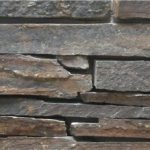The Beauty and Versatility of Cultured Flagstone A Comprehensive Guide
Introduction Flagstone is a popular choice for outdoor landscaping and hardscaping projects due to its natural beauty and durability. Cultured flagstone, also known as manufactured or artificial flagstone, is a versatile alternative to natural flagstone that offers a wide range of benefits. In this comprehensive guide, we will explore the characteristics, advantages, applications, and maintenance of cultured flagstone. Characteristics of Cultured Flagstone Cultured flagstone is made from a mixture of concrete, aggregates, and pigments that are molded and textured to resemble natural flagstone. The manufacturing process allows for a high level of customization in terms of size, shape, color, and texture, making it a versatile choice for various design styles and preferences. One of the key characteristics of cultured flagstone is its uniformity in size and thickness, which simplifies the installation process and ensures a consistent appearance. Natural flagstone, on the other hand, can vary in thickness and shape, leading to challenges during installation. Cultured flagstone is available in a wide range of colors and finishes, including earth tones, warm hues, and cool shades. This variety allows homeowners and designers to create unique and personalized outdoor spaces that complement the overall aesthetic of the property. Advantages of Cultured Flagstone There are several advantages to choosing cultured flagstone over natural flagstone for landscaping and hardscaping projects. Some of the key benefits include: 1. get redirected here -Effectiveness: Cultured flagstone is typically more affordable than natural flagstone, making it a cost-effective option for budget-conscious projects. The manufacturing process allows for greater control over production costs, resulting in lower prices for consumers. 2. Durability: Cultured flagstone is designed to withstand the elements and maintain its appearance over time. It is resistant to fading, cracking, and chipping, making it a durable choice for outdoor applications such as patios, walkways, and retaining walls. 3. Versatility: Cultured flagstone can be used in a variety of outdoor settings, including gardens, pool decks, driveways, and courtyards. Its customizable nature allows for creative design possibilities, such as intricate patterns, borders, and accents. 4. Low Maintenance: Cultured flagstone requires minimal maintenance compared to natural stone. It is easy to clean with a mild detergent and water, and periodic sealing can help protect the surface from stains and discoloration. Applications of Cultured Flagstone Cultured flagstone can be used in a wide range of outdoor applications to enhance the beauty and functionality of outdoor spaces. Some common applications include: 1. Patios: Cultured flagstone is an ideal choice for creating stunning patio surfaces that are both durable and aesthetically pleasing. Its textured finish provides traction underfoot, making it a safe option for outdoor entertaining areas. 2. Walkways: Cultured flagstone can be used to create meandering walkways that connect different areas of the landscape. Its versatility in size and shape allows for the creation of straight or curved pathways that blend seamlessly with the surrounding environment. 3. Retaining Walls: Cultured flagstone can be used to construct retaining walls that provide structural support and visual interest to sloped landscapes. The uniformity of cultured flagstone blocks ensures a cohesive and professional appearance. 4. Pool Decks: Cultured flagstone is a popular choice for pool decks due to its slip-resistant surface and ability to withstand exposure to water and sunlight. Its cool surface temperature also makes it comfortable for bare feet in hot weather. 5. Garden Accents: Cultured flagstone can be used to create decorative garden features such as stepping stones, planters, and borders. Its versatility in color and texture allows for endless creative possibilities in garden design. Maintenance of Cultured Flagstone Proper maintenance is essential to ensure the longevity and beauty of cultured flagstone surfaces. Here are some tips for maintaining cultured flagstone: 1. Regular Cleaning: Sweep or rinse cultured flagstone surfaces regularly to remove dirt, debris, and organic matter that can cause staining or discoloration. Use a mild detergent and water to clean stubborn stains, avoiding harsh chemicals that can damage the surface. 2. Sealing: Consider applying a penetrating sealer to cultured flagstone surfaces to protect them from moisture, oil, and other contaminants. Sealing can also enhance the color and texture of the stone, prolonging its lifespan and maintaining its appearance. 3. Weed Control: Prevent weeds and grass from growing between cultured flagstone joints by applying a weed barrier or using a jointing sand that inhibits weed growth. Regularly inspect the joints and remove any unwanted vegetation to maintain a clean and tidy appearance.  4. Repairing Damage: Address any chips, cracks, or damage to cultured flagstone surfaces promptly to prevent further deterioration. Consult a professional installer or contractor for repairs that require specialized tools or techniques. Conclusion Cultured flagstone offers a cost-effective, durable, and versatile alternative to natural flagstone for outdoor landscaping and hardscaping projects. Its customizable nature, wide range of applications, and low maintenance requirements make it an attractive choice for homeowners and designers looking to enhance the beauty and functionality of outdoor spaces. By understanding the characteristics, advantages, applications, and maintenance of cultured flagstone, you can make informed decisions when planning your next outdoor project.
4. Repairing Damage: Address any chips, cracks, or damage to cultured flagstone surfaces promptly to prevent further deterioration. Consult a professional installer or contractor for repairs that require specialized tools or techniques. Conclusion Cultured flagstone offers a cost-effective, durable, and versatile alternative to natural flagstone for outdoor landscaping and hardscaping projects. Its customizable nature, wide range of applications, and low maintenance requirements make it an attractive choice for homeowners and designers looking to enhance the beauty and functionality of outdoor spaces. By understanding the characteristics, advantages, applications, and maintenance of cultured flagstone, you can make informed decisions when planning your next outdoor project.